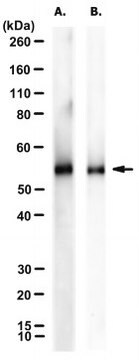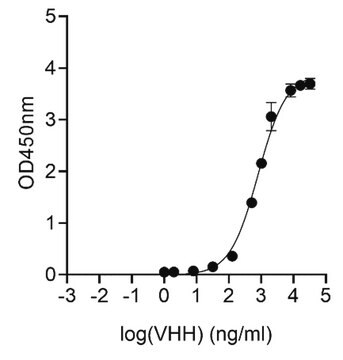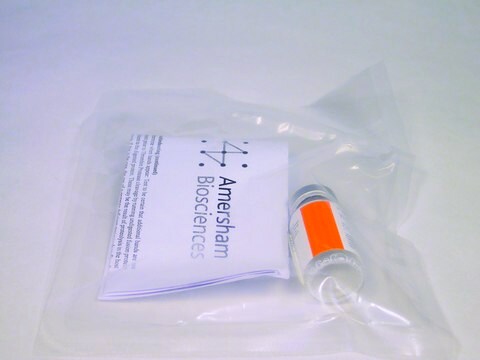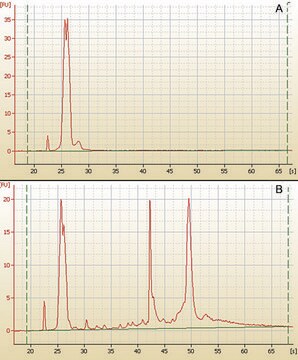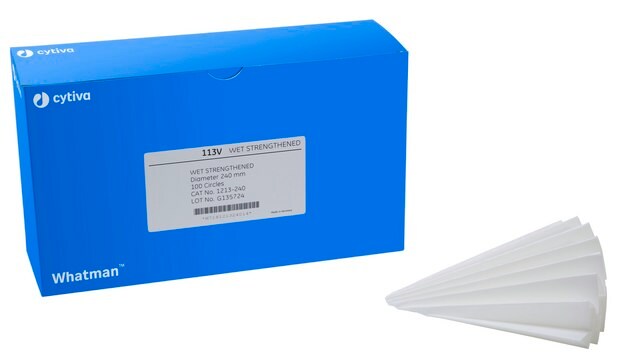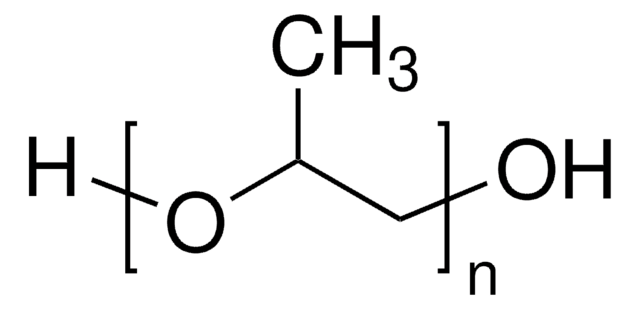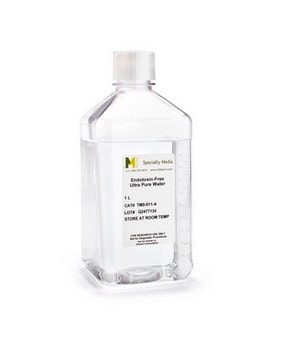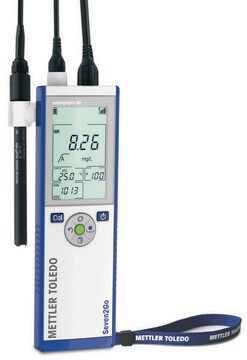MABN2402
Anti-Tau Antibody, clone 10C5

Sinónimos:
MAPTL, MTBT1, Neurofibrillary tangle protein, PR-1, Paired helical filament-tau (PHF-tau), TAU
About This Item
Productos recomendados
origen biológico
mouse
Nivel de calidad
forma del anticuerpo
purified antibody
tipo de anticuerpo
primary antibodies
clon
10C5, monoclonal
mol peso
calculated mol wt 79 kDa
observed mol wt ~57 kDa
purificado por
using protein G
reactividad de especies
human, mouse
envase
antibody small pack of 100
técnicas
ELISA: suitable
immunohistochemistry: suitable
western blot: suitable
isotipo
IgG2bκ
secuencia del epítopo
N-terminal half
Nº de acceso Protein ID
Nº de acceso UniProt
temp. de almacenamiento
2-8°C
Información sobre el gen
human ... MAPT(4137)
Categorías relacionadas
Especificidad
Inmunógeno
Aplicación
Evaluated by Western Blotting with His-tagged, Human recombinant Tau, isoform 1N4R. Western Blotting Analysis: A 1:1,000 dilution of this antibody detected His-tagged, Human, recombinant Tau isoform 1N4R.
Tested Applications
Enzyme Immunoassay (ELISA): Serial dilutions from a representative lot detected Tau monomers or Tau aggregates induced with arachidonic acid in ELISA (Courtesy of Nicholas Kanaan, Ph.D., Michigan State University, USA).
Western Blotting Analysis: A representative lot detected recombinant, human Tau isoform 2N4R monomers and aggregates, 2N3R monomers and aggregates, and mouse Tau monomers. (Courtesy of Nicholas Kanaan, Ph.D., Michigan State University, USA).
Immunohistochemistry Applications: A representative lot detected Tau in Alzheimer′s diseased (AD) brain (superior temporal cortex, STG) tissue sections. Human disease sections had to be treated with phosphatase (dephosphorylates tau) to obtain reactivity suggesting tau in human AD is phosphorylated at its epitope. (Courtesy of Nicholas Kanaan, Ph.D., Michigan State University, USA).
Note: Actual optimal working dilutions must be determined by end user as specimens, and experimental conditions may vary with the end user.
Descripción de destino
Forma física
Reconstitución
Almacenamiento y estabilidad
Otras notas
Cláusula de descargo de responsabilidad
¿No encuentra el producto adecuado?
Pruebe nuestro Herramienta de selección de productos.
Certificados de análisis (COA)
Busque Certificados de análisis (COA) introduciendo el número de lote del producto. Los números de lote se encuentran en la etiqueta del producto después de las palabras «Lot» o «Batch»
¿Ya tiene este producto?
Encuentre la documentación para los productos que ha comprado recientemente en la Biblioteca de documentos.
Nuestro equipo de científicos tiene experiencia en todas las áreas de investigación: Ciencias de la vida, Ciencia de los materiales, Síntesis química, Cromatografía, Analítica y muchas otras.
Póngase en contacto con el Servicio técnico